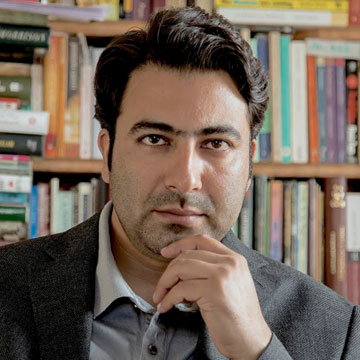 New Delhi:
New Delhi: Conflicts are known to fuel creative art but Kashmir has been an exception where there is no institutionalised set-up for aspiring creative writers, says an award-winning Kashmiri journalist-turned-author and academician.
Shahnaz Bashir's second book, "Scattered Souls" (Harper Collins/pp 183/Rs 399) -- a collection of 13 short stories about the people of his land battling a predicament of unending violence in their daily lives - has just been launched.
Bashir, who teaches creative journalism and literary reportage at the Central University of Kashmir, lamented how the Valley -- home to legendary creative writers of the yore like Amin Kamil, Hari Krishan Koul, Ratan Lal Shant, Somnath Zutshi, Dina Nath Nadim -- has been unable to groom new and aspiring writers.
"There undoubtedly isn't. But I think in the next five years or so we could have it. Apart from that, it is each aspiring writer's personal, individual responsibility to self-teach himself or herself; to read, to work hard and become institutions unto themselves in a culture that is hell-bent not to entertain institutionalisation of creative writing," Bashir told IANS in an interview.
Apart from this, he said, Kashmiri writers also don't find publishers very easily. He admitted he himself faced difficulties initially in getting his debut novel, "The Half Mother", published.
The book, published in June 2014 by Hachette India, won him the Muse India Young Writer Award in 2015.
In Kashmir, writers generally face difficulties in finding a publisher.
Asked why it took so long for Kashmir literature to be part of the political struggle, Bashir said it was because the Valley has seen "a boom in writing in English" only after the 1990s -- incidentally when the armed insurgency began in the state.
"Most of the Kashmiri language literature is on other themes too," he said, adding the younger writers were now "writing on the situation they are exposed to".
Bashir's "Scattered Souls" weaves together the ordinary and not-so-ordinary lives of a conflict-ridden people of a scenic territory brutalised by the decades of unending violence.
It tells stories like that of an "ex-militant whose past continues to stalk his present"; "the wife who begins to dress like her husband after losing him to crossfire" and "the boy who obsessively follows US President (Barack) Obama's India visit, hoping to hear him mention the 'K' word".
The book's cover features a sepia-toned picture showing people climbing trees to take a look at a militant's funeral. Bashir said the cover itself is a story.
He said he found the picture on the Facebook and "without knowing the context, I liked the sheer imagery in it".
"Book covers indirectly evince a certain meaning of the stories in the books," he said about the picture taken by a Kashmiri photojournalist that had become a rage on the social media.
And does it mean that all modern Kashmir literature is about suffering? What about love stories from the land that evinces romance?
"That is true. I wish there were an alternative to suffering. There isn't," he said, remembering Russian author Fyodor Dostoevsky's wife Anna Snitkina once asking him whether he would ever write happy stories.
"The wise writer's response was: 'What happy has happened in my life?' Even love stories in Kashmir would have a suffering in them from the situation they happen in."
 New Delhi: Conflicts are known to fuel creative art but Kashmir has been an exception where there is no institutionalised set-up for aspiring creative writers, says an award-winning Kashmiri journalist-turned-author and academician.
New Delhi: Conflicts are known to fuel creative art but Kashmir has been an exception where there is no institutionalised set-up for aspiring creative writers, says an award-winning Kashmiri journalist-turned-author and academician.